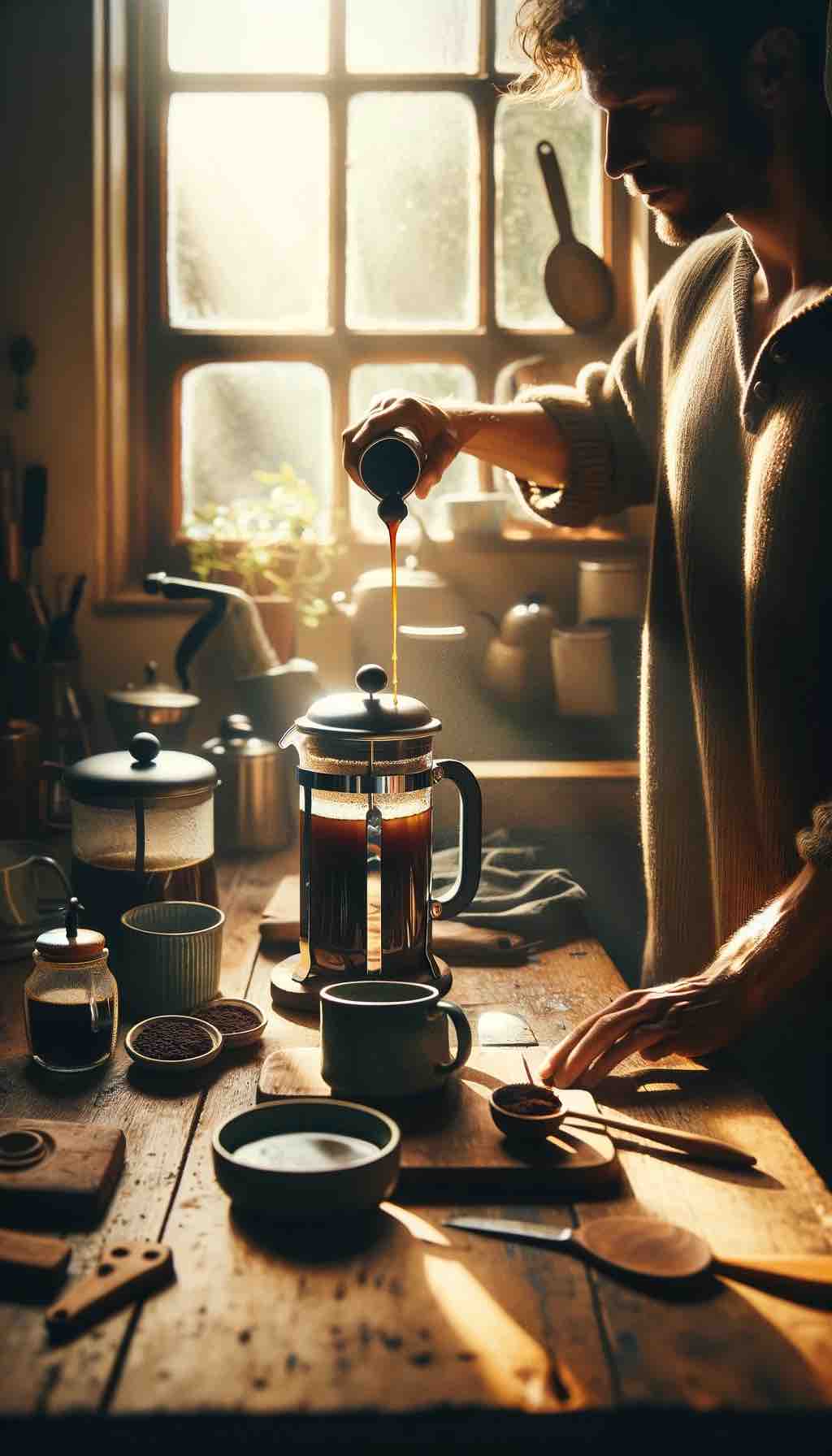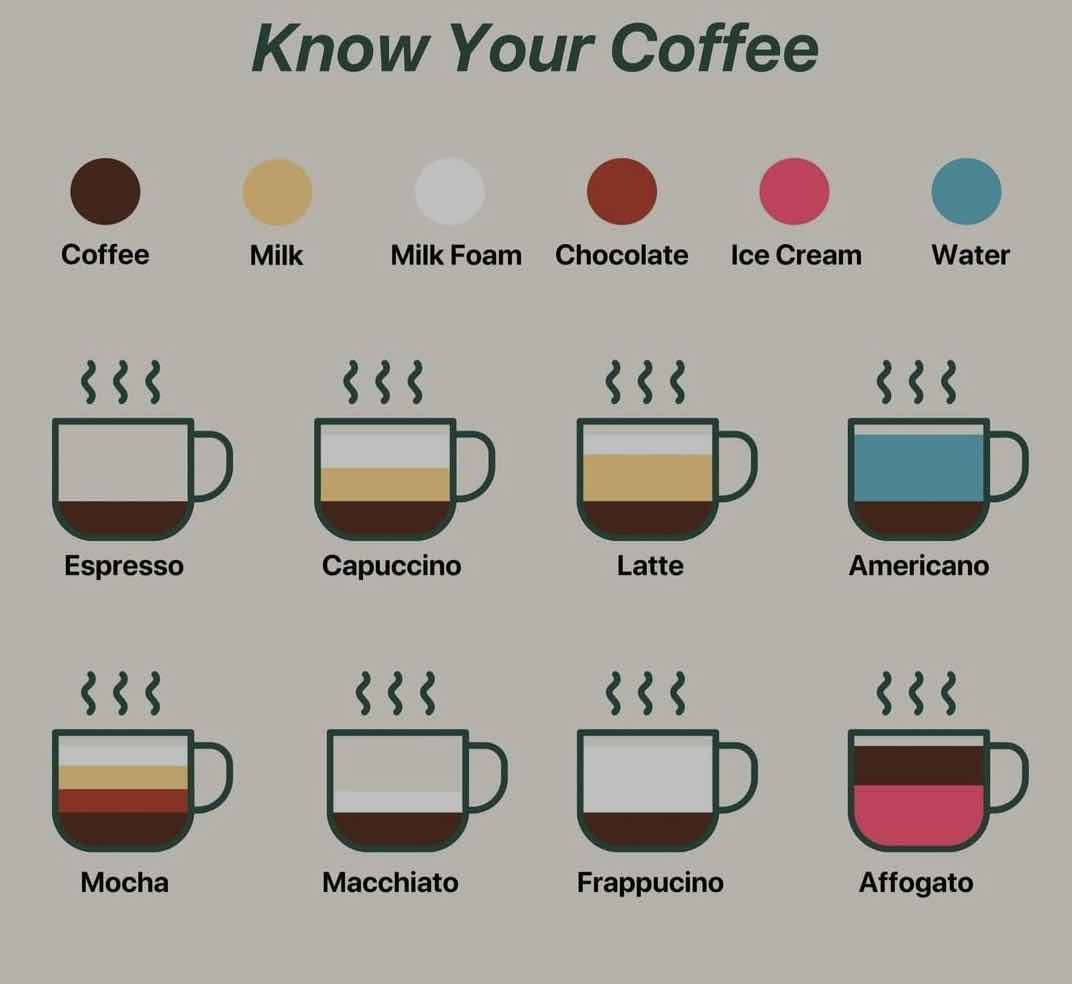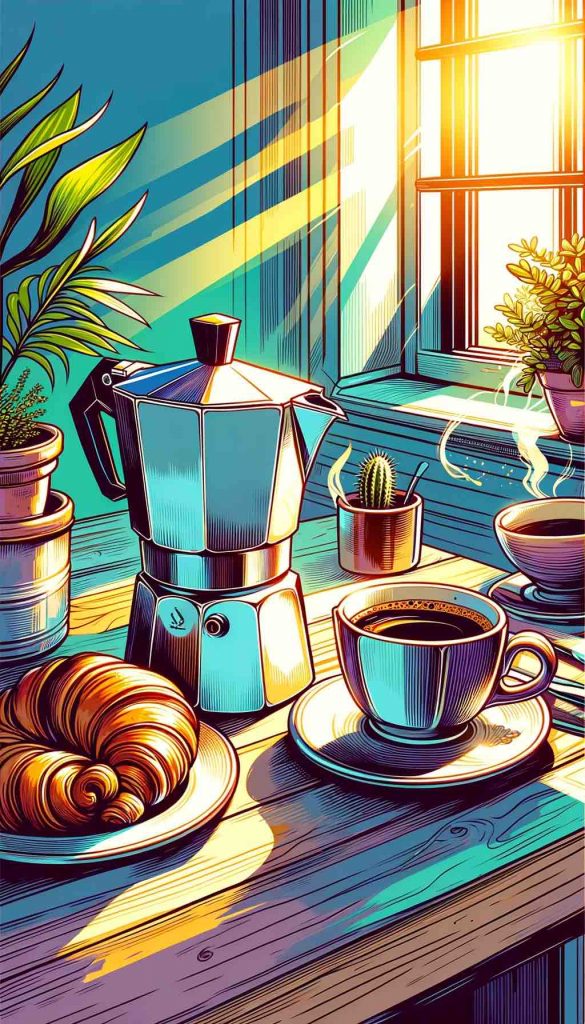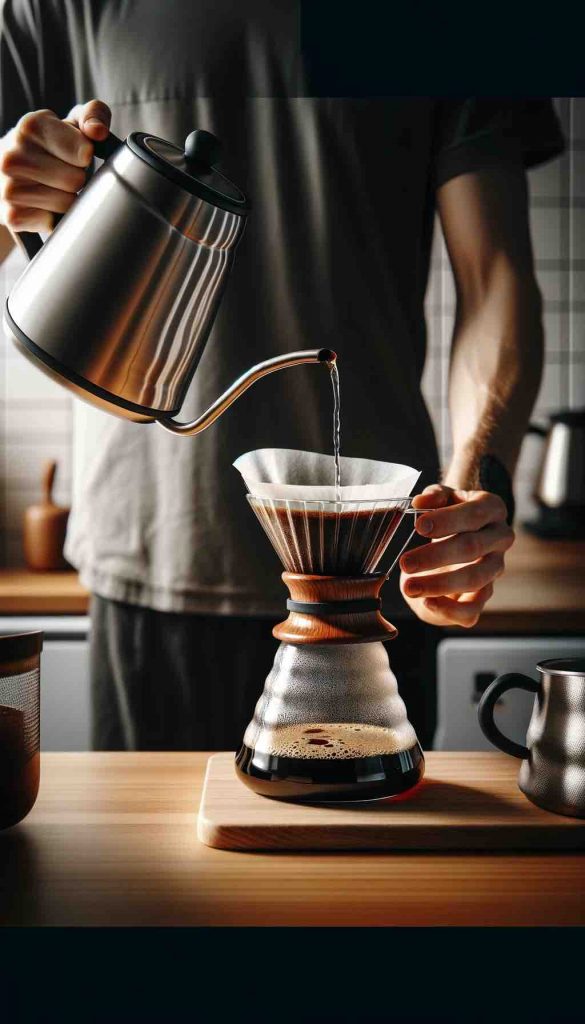
Welcome to the definitive exploration of coffee brewing methods, where we marry the rigor of science with the artistry of coffee culture to elevate your daily cup. This guide isn’t just about how to brew coffee; it’s about transforming your coffee ritual into an extraordinary experience. Let’s embark on a journey through the myriad of brewing methods, uncovering the secrets behind each one to help you unlock the full potential of your coffee.
The Science of Coffee Brewing
At the heart of every great cup of coffee is a series of chemical reactions and physical processes, meticulously orchestrated to extract the soul of the coffee bean. From the moment hot water meets coffee grounds, a complex ballet of extraction begins. Water, the solvent, gently pulls out the flavors, oils, and compounds from the grounds, balancing the sweet, acidic, and bitter notes to create a harmonious cup. The key to mastery lies in understanding the variables at play—grind size, water temperature, brew time, and coffee-to-water ratio—and how they interact to influence extraction.
Understanding the chemistry of coffee brewing is essential for unlocking the full potential of your beans. Here’s a breakdown of the key scientific principles that govern the brewing process:
- Extraction: The process of dissolving desirable flavors and compounds from coffee grounds into water. Achieving the right balance between under-extraction (sour, weak) and over-extraction (bitter, harsh) is crucial.
- Grind Size: Affects the surface area exposed to water, influencing extraction rate. Fine grinds for quick extraction (espresso), coarse grinds for slower extraction (French Press).
- Water Temperature: Ideally between 195°F to 205°F (90°C to 96°C) for optimal extraction. Too hot, and you risk over-extraction; too cool, and under-extraction.
- Brew Time: Dictated by grind size and brewing method. Timing is critical for harnessing the full spectrum of coffee flavors.
- Coffee-to-Water Ratio: The Golden Ratio typically falls within 1:15 to 1:18 (coffee:water) for balanced extraction, but personal preference plays a significant role.
The Art of Choosing Your Brew
Each brewing method offers a unique canvas on which the character of your coffee can be expressed. Here’s a look at the most beloved methods, their nuances, and how to harness them for your perfect brew.
French Press: Rich and Robust
- Grind: Coarse to prevent over-extraction and sediment.
- Ratio: 1:15 coffee-to-water ratio for a full-bodied brew.
- Temperature: 200°F (93°C) to balance extraction.
- Brew Time: 4 minutes for optimal flavor.
- Technique: Pre-warm the press, pour water in stages, and stir gently after adding water.
French Press: The Timeless Classic
The French Press, with its straightforward design and full immersion brew, delivers a rich, robust coffee. Its charm lies in the simplicity of preparation and the depth of flavor it achieves. For a full-bodied cup, aim for a coarse grind and a brew time of about four minutes. The result? A velvety texture with the essential oils and fine particles that embody the bean’s true essence.
Pour Over: Precision and Clarity
- Grind: Medium-fine, similar to table salt consistency.
- Ratio: 1:17 for a balanced cup.
- Temperature: 205°F (96°C) for thorough extraction.
- Brew Time: 2-3 minutes depending on the device (V60, Chemex).
- Technique: Use a gooseneck kettle for controlled pouring. Bloom the grounds (pour water to wet all grounds and wait 30 seconds) before continuing the pour in a spiral motion.
Pour Over: The Connoisseur’s Choice
Pour Over brewing, epitomized by devices like the V60 and Chemex, is revered for its precision and clarity. This method allows for an unparalleled level of control over the brewing process, making it the darling of specialty coffee aficionados. The key is a steady hand and a keen eye for timing, ensuring a clean and vibrant cup that accentuates the coffee’s nuanced flavors.
AeroPress: Versatile and Experimental
- Grind: Medium-fine to fine, adaptable based on recipe.
- Ratio: 1:15 for a strong, concentrated brew.
- Temperature: 185°F – 205°F (85°C – 96°C) allows for experimentation.
- Brew Time: 1-2 minutes, but can vary widely with technique.
- Technique: Inverted method for immersion, standard for quicker brew. Fine-tune grind size and pressure for desired extraction.
AeroPress: The Innovator’s Dream
Compact, versatile, and a breeze to clean, the AeroPress has taken the coffee world by storm. Whether you crave a bold espresso-like concentrate or a lighter Americano, the AeroPress delivers with its air pressure-driven extraction. Experimentation is the name of the game, with countless recipes to explore, each offering a new dimension of taste.
Espresso: Concentrated Complexity
- Grind: Fine, almost powdery.
- Ratio: 1:2 coffee-to-water for traditional espresso.
- Temperature: 200°F (93°C), with machine preheating.
- Brew Time: 25-30 seconds for a single shot.
- Technique: Tamp evenly to ensure uniform extraction. Monitor pressure and adjust grind size accordingly.
Espresso: The Essence of Coffee
Espresso brewing is the pinnacle of coffee technology, capturing the intense flavors and aromas of the coffee bean in a single, concentrated shot. Mastery over this method requires precision in every aspect, from the fineness of the grind to the pressure of extraction. The reward? A rich, complex coffee experience that forms the foundation for a myriad of specialty drinks.
Cold Brew: Smooth and Mellow
- Grind: Coarse to ensure slow extraction.
- Ratio: 1:8 for a concentrate, dilute as desired.
- Temperature: Room temperature or colder.
- Brew Time: 12-24 hours for full extraction.
- Technique: Steep in a large jar or cold brew maker, stirring occasionally. Strain carefully to avoid sediment.
Cold Brew: The Cool Contender
Cold Brew coffee, known for its smooth, mellow flavor profile, offers a refreshing alternative to traditional brewing methods. By steeping coffee grounds in cold water for an extended period, usually 12 to 24 hours, you achieve a concentrate that’s sweet, nuanced, and low in acidity. It’s a testament to patience, yielding a brew that’s incredibly versatile and perfect for those hot summer days.
The Journey to Your Perfect Cup
Finding your preferred brewing method is a personal journey, one that requires curiosity and a willingness to experiment. Start with quality, freshly roasted beans, and adjust the variables to suit your taste preferences. Remember, the beauty of coffee lies in its diversity—there’s a world of flavors waiting to be discovered.
Mastering Your Craft
- Experimentation: The key to personalized perfection. Adjust variables and take notes on outcomes.
- Water Quality: Use filtered water for a clean taste.
- Freshness: Grind beans just before brewing to preserve flavor.
- Cleaning: Regularly clean equipment to prevent off-flavors.
Embrace the Ritual
Beyond the science and the techniques, coffee brewing is a ritual, a moment of mindfulness in our often hectic lives. Whether you’re pressing down on a French Press, pouring water over a bed of grounds, or watching an espresso shot pour, it’s an opportunity to pause, to savor the process as much as the final cup.
Conclusion: Your Coffee, Your Way
This guide is a starting point, a beacon to guide you through the vast landscape of coffee brewing. But the true guide is your palate, your preferences, and the pleasure you find in every cup. Dive into the art and science of coffee brewing, explore with an open mind, and craft the coffee experiences that speak to you. After all, the best cup of coffee is not just about taste; it’s about the joy and satisfaction it brings to your life.
Happy brewing!
FAQs for Mastering Coffee Brewing Methods
- What is the best grind size for a French Press?
- For French Press, a coarse grind size is ideal. It prevents fine grounds from slipping through the press filter, which can lead to over-extraction and a gritty cup.
- How does water temperature affect coffee brewing?
- Water temperature plays a crucial role in extraction. Between 195°F to 205°F (90°C to 96°C) is optimal. Temperatures outside this range can lead to under-extraction (sour, weak coffee) or over-extraction (bitter, harsh coffee).
- What is the “Golden Ratio” in coffee brewing?
- The Golden Ratio in coffee brewing typically ranges from 1:15 to 1:18 (coffee to water). This ratio ensures a balanced extraction, though personal taste preferences can adjust this ratio.
- How long should I brew coffee in an AeroPress?
- AeroPress brewing times can vary from 1 to 2 minutes depending on the desired strength and grind size. Experimentation is key to finding your perfect brew time.
- Can I make espresso without an espresso machine?
- While traditional espresso requires high pressure, an AeroPress can produce a concentrated coffee similar to espresso, though it won’t have the same crema and intensity as machine-made espresso.
- What is the difference between cold brew and iced coffee?
- Cold brew is made by steeping coffee grounds in cold water for 12-24 hours, resulting in a smooth and sweet flavor. Iced coffee is typically brewed hot and then cooled down with ice, retaining more acidity and bitterness.
- How do I clean my coffee equipment properly?
- Rinse equipment with hot water after each use and deep clean weekly with a coffee equipment cleaner to remove oil buildup. For grinders, use grinder cleaning pellets to remove old grounds and oils.
- Why does my coffee taste bitter?
- Bitterness often results from over-extraction. Try using a coarser grind, shorter brew time, or lowering the water temperature to adjust.
- Can the type of water I use affect my coffee’s flavor?
- Absolutely. Hard water can lead to scale buildup in your equipment and affect extraction, while heavily chlorinated tap water can impart off-flavors. Filtered or bottled water is recommended for the cleanest taste.
- What’s the best way to store coffee beans?
- Store coffee beans in an airtight container at room temperature, away from direct sunlight and moisture. Avoid refrigeration as it can cause condensation and affect flavor.
Blog Tags
coffee brewing, French Press, AeroPress, espresso, pour-over, cold brew, grind size, water temperature, coffee-to-water ratio, coffee storage, coffee extraction














